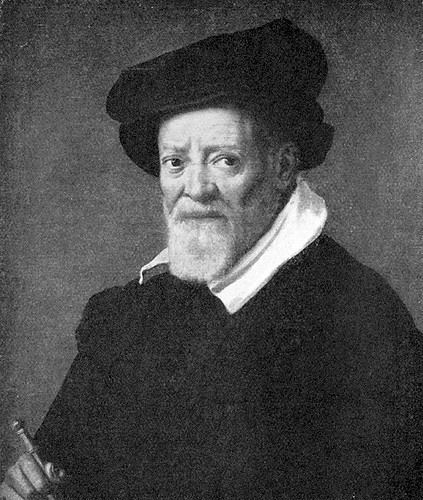Name Vincenzo Scamozzi | Role Architect | |
Structures Villa Capra "La Rotonda", Teatro all'antica, Biblioteca Marciana, Villa Molin, Church of Tolentini - Venice | ||
Vincenzo scamozzi 1548 1616
Vincenzo Scamozzi (2 September 1548 – 7 August 1616) was an Italian architect and a writer on architecture, active mainly in Vicenza and Republic of Venice area in the second half of the 16th century. He was perhaps the most important figure there between Andrea Palladio, whose unfinished projects he inherited at Palladio's death in 1580, and Baldassarre Longhena, Scamozzi's only pupil.
Contents
- Vincenzo scamozzi 1548 1616
- La vita di vincenzo scamozzi 12 02 2016
- Biography
- The Idea of a Universal Architecture
- Piazza San Marco
- Chronology of works
- References
The great public project of Palladio's that Scamozzi inherited early in the process of construction was the Teatro Olimpico at Vicenza, which Palladio had designed in the last months of his life.

La vita di vincenzo scamozzi 12 02 2016
Biography
Scamozzi was born in Vicenza. His father was the surveyor and building contractor Gian Domenico Scamozzi; he was Scamozzi's first teacher, imbuing him with the principles of Sebastiano Serlio, laid out in Serlio's book. Vincenzo visited Rome in 1579–1580, and then moved to Venice in 1581. In 1600, he visited France and left a sketchbook record of his impressions of French architecture, which first saw the light of day in 1959. Scamozzi is famous for having inherited several unfinished projects from Andrea Palladio at the time of Palladio's death in 1580 and for bringing them to their completed form.
"The Idea of a Universal Architecture"

Scamozzi's influence spread far beyond his Italian commissions through his two-volume treatise, L’Idea dell’Architettura Universale ("The Idea of a Universal Architecture"), which is one of the last works of the Renaissance dealing with the theory of architecture. It was originally published with woodcut illustrations at Venice in 1615. Scamozzi depended for sections of his treatment of Vitruvius on Daniele Barbaro's commentary, published in 1556 with illustrations by Palladio; he also discussed issues of building practice. At that time, such treatises were becoming a vehicle for self-promotion. Scamozzi was aware of the potential value of publicity distributed through the established channels of the book trade and he included many of his own plans and elevations, as built, as they should have been built, and as idealized projects.

His first book entitled 'Discorsi sopra L'antichita di Roma' (Venice: Ziletti, 1583) had been quickly cobbled together with some illustrated commentary on the ruins of Rome, assembled in "the space of a few of days." According to his preface to the volumes, the images were stock productions that already existed. Over half were copied from a volume published by Hieronymus Cock in Antwerp in 1551.
His major book came out one year before his death and was too late to influence his own success. Scamozzi's practice is sometimes spoken of as being a source of the neo-Palladian architecture as it was introduced by Inigo Jones, another follower of Andrea Palladio's own example. Rudolf Wittkower referred to him as among "the intellectual father(s) of neo-classicism".
Piazza San Marco
Scamozzi moved to Venice in 1581, where he had been invited to design the Procuratie Nuove on the Piazza San Marco itself. The Procuratie Nuove were a row of official housing for the Procuratorate of San Marco, presented as a unified palace front that continues the end facade of the Sansovino Library, with its arcaded ground floor and arch-headed windows of the first floor, but adding an upper floor to provide the necessary accommodation. In accomplishing this design, Scamozzi adapted a rejected project of Palladio's for a re-faced Doge's Palace, with colonnettes that flank the windows to support alternating triangular and arched pediments, upon which Scamozzi added reclining figures, to balance the richness of the Sansovinian decoration of the two lower floors. Eleven bays of this project were completed, and later were extended by Baldassare Longhena (Scamozzi's only pupil) to fill the whole south flank of the piazza.
Chronology of works
All but one of the following works are in the territory of the Republic of Venice:
